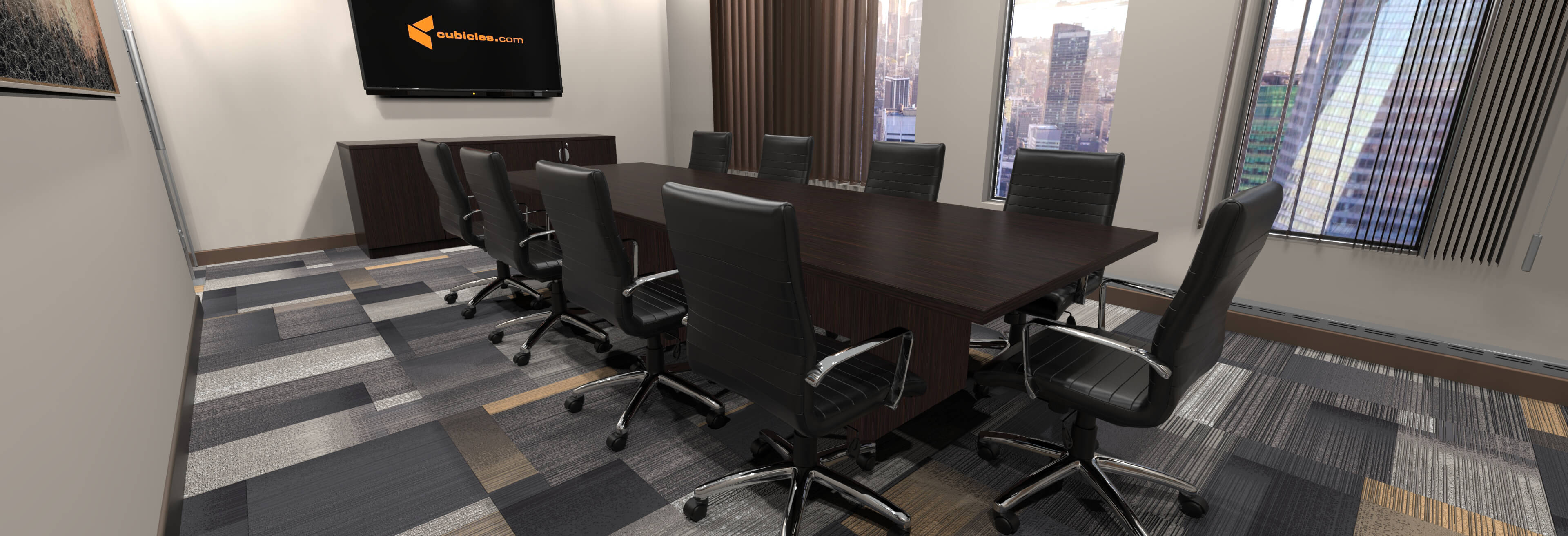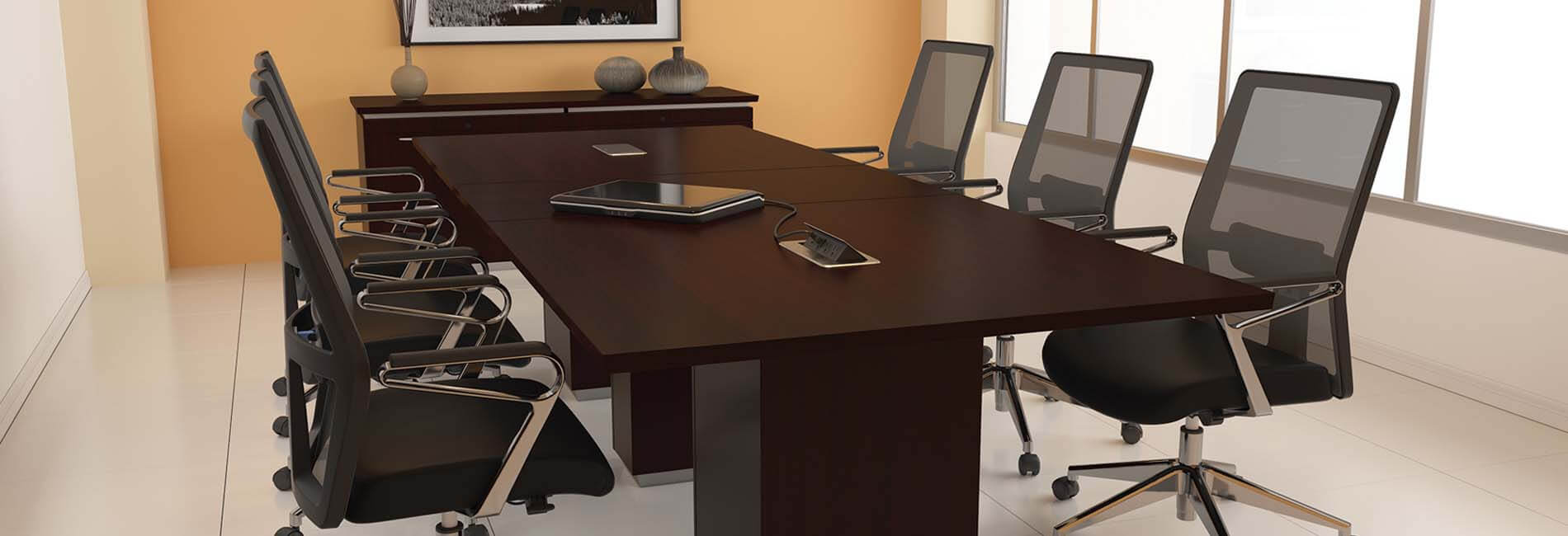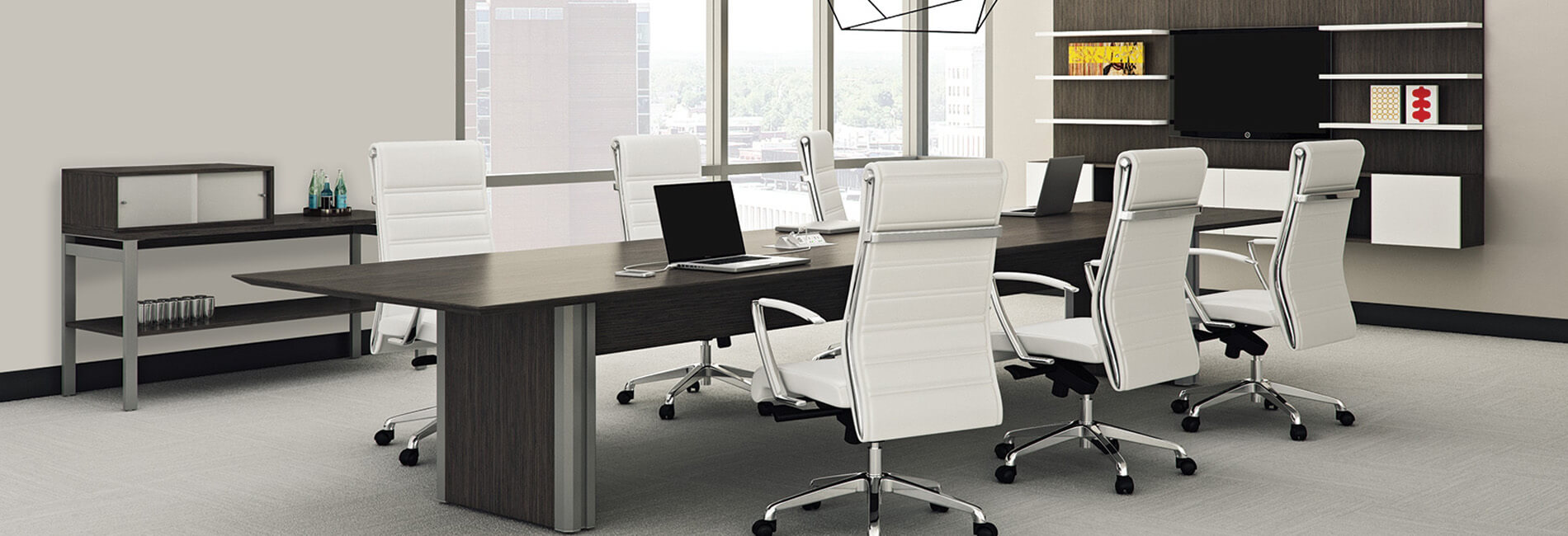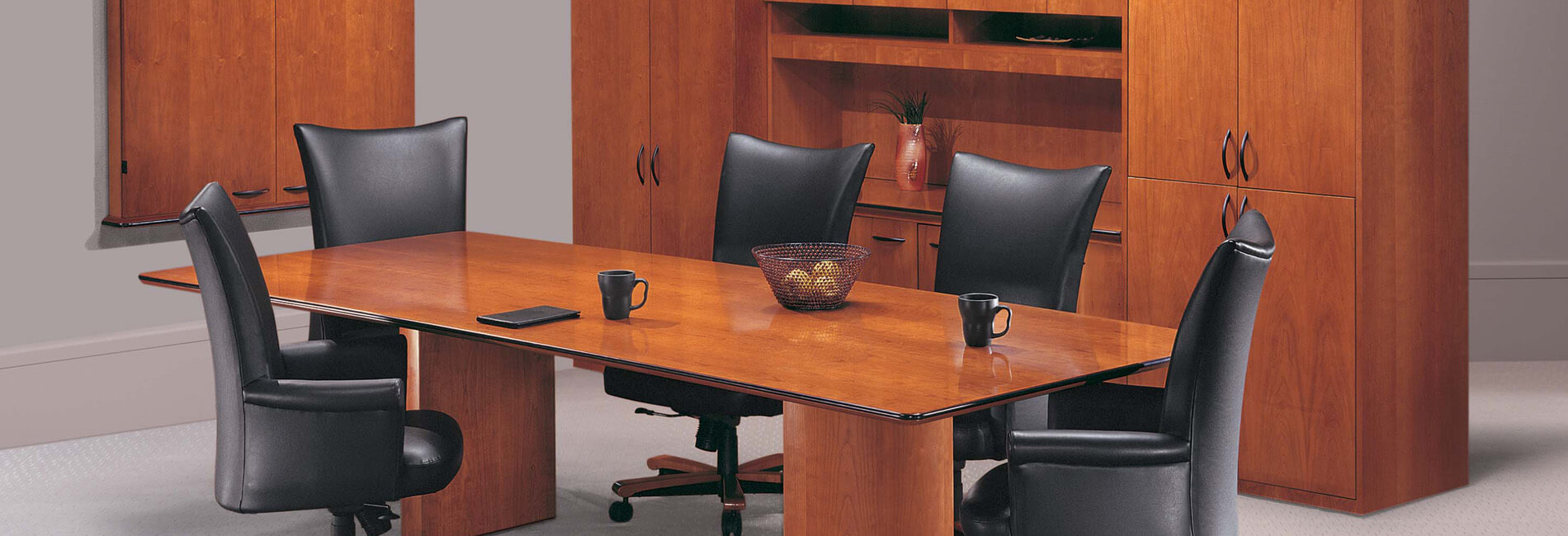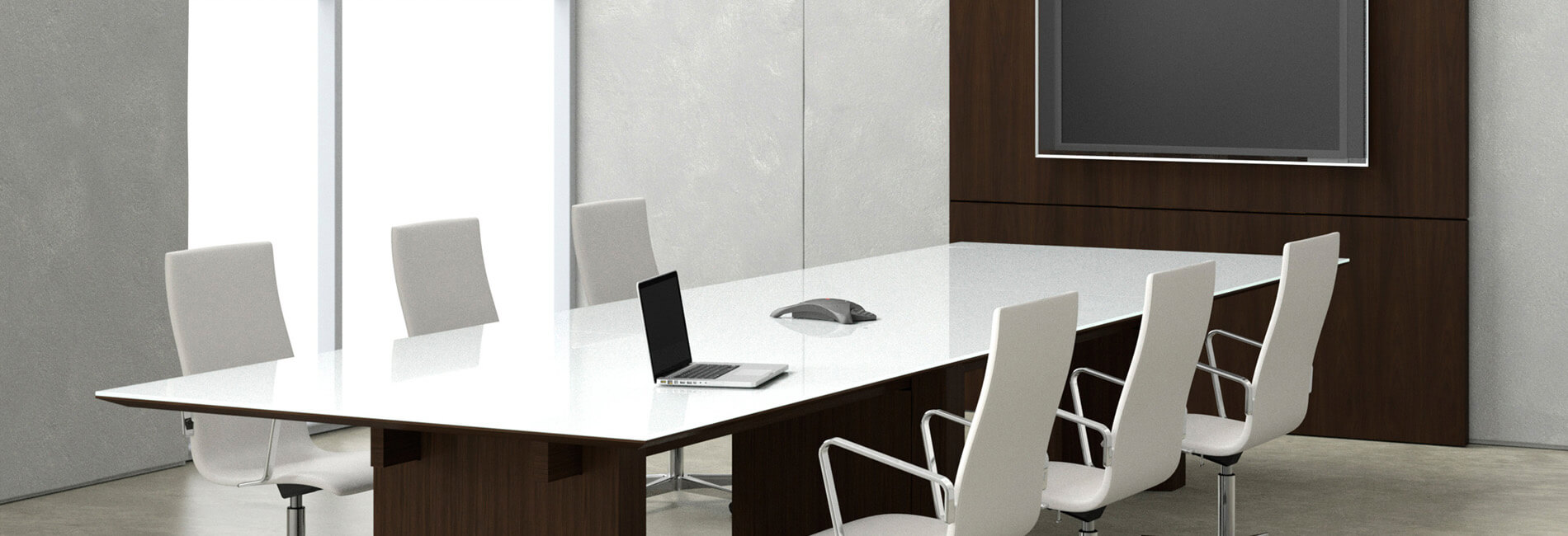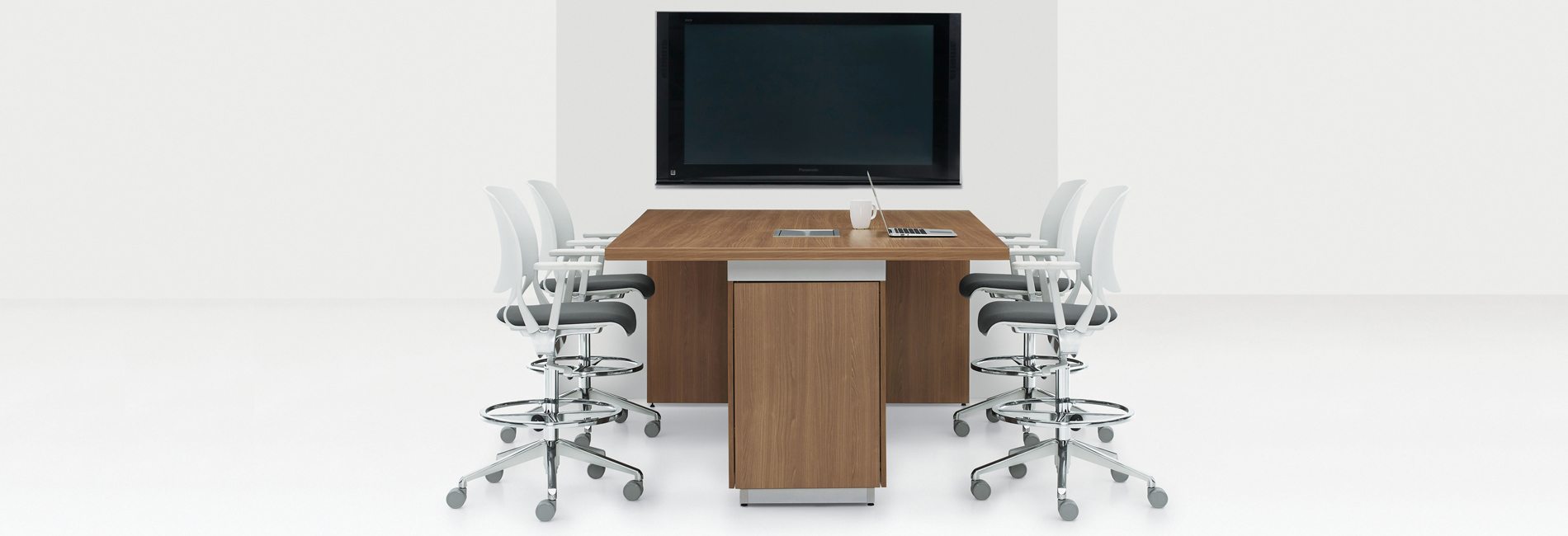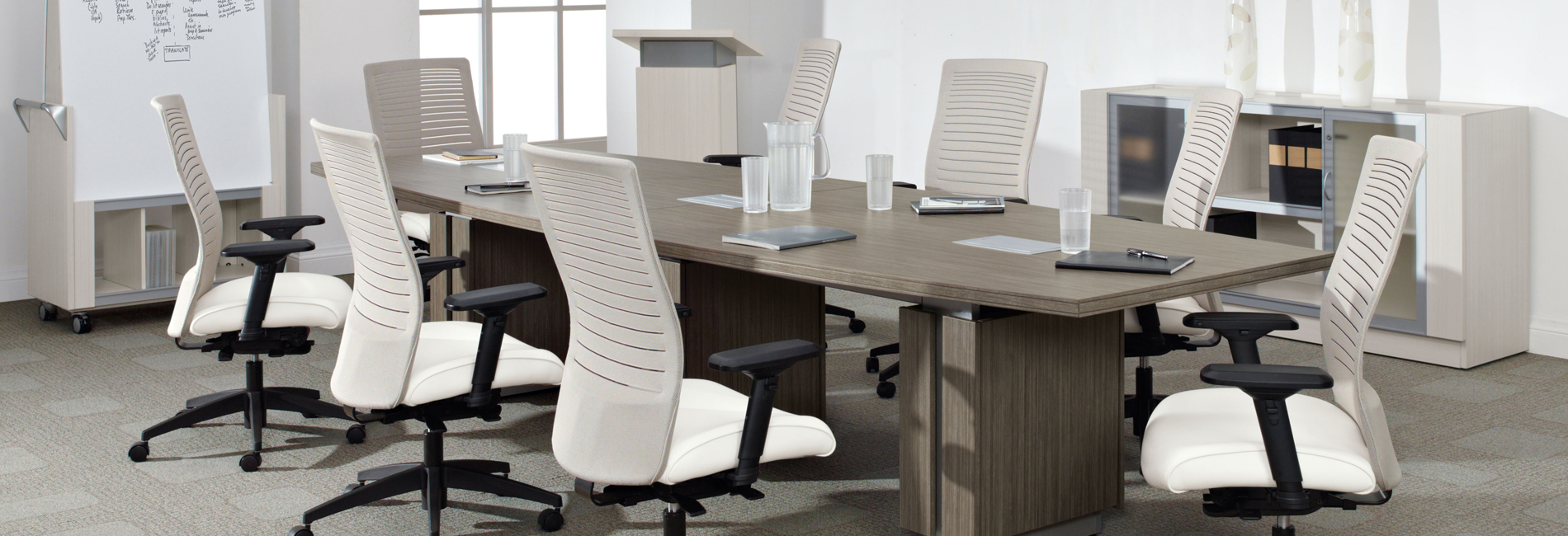Conference room tables are THE central elements in every room where you hold meetings and business negotiations with clients and partners. They are the single most important piece of office furniture for every modern meeting room and executive office. It is where important contracts are being signed and trust is being build. So, choosing the proper conference tables for your work environment is crucial. It can be a hub for your office space, that will create the desired professional feel that will “ground” the room and create an environment for interaction between your employees, or with your clients and business partners.
At Cubicles.com we have a wide variety of conference tables to fit office spaces of any size and interior style. Choose the meeting table of your preferred size, shape and finish, and why not even pick up a whole conference table set? Simply browse through our comprehensive selection and find your perfect conferencing solution! And make sure to follow down to the bottom of this page, for some useful tips and advice on what to look for when choosing the table that will best suit your needs.
Conference Table
Industrial Style Conference Table
Meeting Table
Conference Table Set
Conference Room Storage and Accessories
Your office conference table can serve a lot of purposes. Yes, you can surely close the deal with an important client, but you can also use it for team meetings, brainstorming sessions, meeting with new clients, casual lunch meetings and even for occasional social gatherings and celebrations in the office. With this many different purposes and reasons for gathering around your conference table, the meeting table is an important asset for any business, and it's important that you choose conference room furniture that suits not only all those common needs, but also the unique needs that your business might have.
There are 5 key factors that you should take into consideration, before you make your purchase.
The size of the room.
Obviously, when it comes for conference tables, and any other piece of office furniture for that matter, size does matter. The the right size for your meetings is of paramount importance, but it's unwise to not consider the size of your conference room firstly. Always choose a conference table that is in appropriate proportions to the space. A table too large won't fit your room and this can create inconveniences and obstacles, leaving insufficient room for people to walk around the table, as well as obstructing doors and windows. On the other hand, if the table is rather too small is again a problem. It will look dwarfed in bigger rooms and can leave the impression that it's placed there accidentally, or like you had just put into the conference room some piece of furniture that you found laying around. And you wouldn't want to leave that impression on your big clients, trust me.
But if the case was with a smaller company, with fewer people who would use the conference table on a regular basis, it would definitely be more appropriate to opt for a smaller table that would be just right to accommodate everyone, so that they don't feel separated by a huge table, but also just large enough so that it doesn't feel crowded.
You'd also want to consider what other possible functions the room might have, like, for example, if you host presentations regularly and you need enough room for the audio / visual station, screen, projector etc., then you have to account for that space as well.
So, as you can see, one size does not fit all, when it comes to conference tables. Make the necessary measurements and calculations, and do your research before you take the purchasing step, is what we'd always advise you. When measuring your space, it's important not to eyeball it or make a guess. Measure the exact dimensions and write those down. Then, subtract at least 8 feet from both the length and the width of those dimensions and that would make the maximum dimensions for your conference table. This means leaving about 4 feet of clearance around your table, so that people could comfortably get in and out of the Executive Chairs and Conference Chairs and move around behind anyone who is already seated.
Shape.
Though it may not come to your mind right away, but shape is directly related to size, in most cases. Just as with size, if you choose a modern conference table of a smaller size, to suit the demands of small meetings, you might also want to consider a different shape for that purpose. It may come as a surprise to you to learn that there are 5 different shapes for conference tables, out there on the market.
Round: The round conference table is designed to accommodate only a few people at the same time, which can be ideal for small meeting rooms and meetings of 2-6 people.
Square: Another good option for smaller meetings in smaller spaces, but the square offers a bit more work surface area than the round tables.
Rectangular: The classic, formal option for many of the larger conference rooms. You can find rectangular conference tables in a wide range of sizes and material / finishing options.
Racetrack: Elongated like the rectangular table, but this style is rounded on each end, giving you a tiny bit of extra seating capacity, and it would probably make it a bit easier to move your office chairs around the table.
Boat-Shaped: This shape gives the long sides a curve that makes the middle wider, which gives a wider and more clear sight line for everyone who is seated on the side, which works great for presentations and discussions between attendees among larger meeting groups.
Make sure you consider carefully all the different shapes and weigh the pros and cons of each shape against your needs, personal taste, seating requirements, use and purpose.
Features.
Regardless of the industry you're in, communication is something you can't do without. Same goes for power. Most likely, a lot of different types of electronic devices will be used in your conference room. Laptops, phones, audio/video and presentation equipment – they all need power sources and some kind of connectivity, so there are some useful features to look for. Some tables, mostly the boat-shaped ones, have wire management systems with outlets and sockets embedded in their surface top, which can make things way more functionally convenient and easy, and you won't get caught up in a clutter of chords, plugs and wires during an important meeting or presentation.
Design.
If you already have any existing furniture in your conference room, it would be a good advice to consider its style and design when selecting a meeting table. Chairs, storage cabinets of some kind, or any other type of office furniture, whatever it is that is already there and you plan on keeping, failing to match your conference table with the rest of the furniture and the overall décor of the room can make your office look less professional. Even if you went for eclectic style, make sure it doesn't look mismatched and off-track. If you're unsure of how your table would match the existing design and the furniture you already have, you can always opt for a more neutral solution that would fit well with almost anything else, at least in terms of colors and design style, like a glass conference table, for example.
Cost.
Lastly, don't forget this important consideration when choosing the best conference table for your office meeting room. There are a great many available options for tables of different price ranges. Their prices vary according to the size, the materials and the brand, so in order to make the best choice possible, explore all the options before making a purchase, to make sure you'll get the best that fits within your budget.
In conclusion, when it comes to the impression of your business on your clients and partners, your conference room says a lot, and as a focal point in it, your conference table surely makes an important statement. We believe that the best conference table is one that fits perfectly into your office décor and your meeting room, it offers a professional look with an elegant and classy design, so we made this selection of hand-picked contemporary conference tables, for our customers to choose from, that can add beauty and style to any conference room.

